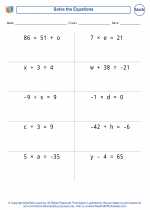One & Two Step Equations -> numbers
Numbers
In mathematics, numbers are used to quantify and measure objects and quantities. They are classified into different types such as natural numbers, whole numbers, integers, rational numbers, and irrational numbers.
Natural Numbers
Natural numbers are the counting numbers, which start from 1 and go up to infinity. They are represented as N = {1, 2, 3, 4, ...}.
Whole Numbers
Whole numbers include all the natural numbers along with the number 0. They are represented as W = {0, 1, 2, 3, 4, ...}.
Integers
Integers include all the whole numbers along with their negative counterparts and zero. They are represented as Z = {..., -3, -2, -1, 0, 1, 2, 3, ...}.
Rational Numbers
Rational numbers are numbers that can be expressed as a fraction of two integers, where the denominator is not zero. They can be represented as a/b, where a and b are integers and b ≠ 0.
Irrational Numbers
Irrational numbers are numbers that cannot be expressed as a fraction of two integers. They are non-repeating and non-terminating decimals. Examples include √2, π, and e.
Operations with Numbers
Basic operations with numbers include addition, subtraction, multiplication, and division. These operations follow specific rules and properties.
Study Tips
- Practice identifying different types of numbers.
- Understand the properties of each type of number.
- Practice performing operations with different types of numbers.
- Memorize common irrational numbers and their decimal approximations.
[Numbers] Related Worksheets and Study Guides:
.◂Math Worksheets and Study Guides Sixth Grade. One & Two Step Equations
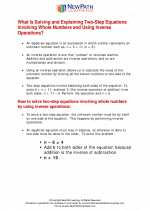
 Worksheet/Answer key
Worksheet/Answer key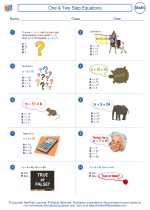
 Worksheet/Answer key
Worksheet/Answer key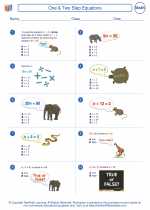
 Worksheet/Answer key
Worksheet/Answer key
 Worksheet/Answer key
Worksheet/Answer key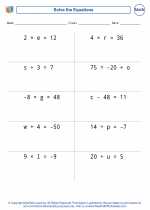
 Worksheet/Answer key
Worksheet/Answer key